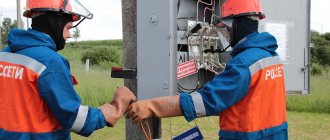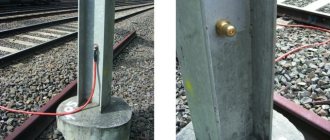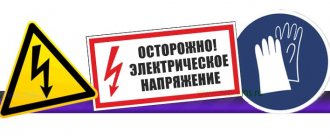Rules for labor protection during the operation of electrical installations as amended by Order No. 903n of the Ministry of Labor of Russia dated December 15, 2020 came into force on January 1, 2022. The previous POTs were in effect for seven years, and during their application a number of changes occurred: remote control of power plants, new safety methods for special work were introduced, and requirements for assessing occupational risks appeared. The rule-makers took them into account in the new edition of the Labor Safety Rules. The need for electrical safety certification remains unchanged.
We have prepared an overview of changes in the requirements for the operation of electrical installations and a bonus for readers - an article-by-article comparison of POTEE as amended by orders No. 328n and 903n.
General changes
POTEE as amended by Order 903n reflects the trend in regulatory regulation in recent years: the employer must assess the risks of its activities and decide how much effort to devote to labor protection. The legislator establishes only the minimum necessary safety requirements when working with dangerous and harmful factors.
Chapter I of the Rules establishes the employer's responsibility for ensuring labor safety. The clause that he can transfer it to management employees, for example, the chief engineer or technical director, is excluded. But the employer received additional rights:
- Based on the specifics of the activity and assessment of professional risks, use digital recording devices to control the safety of the production process. In fact, this means that video recordings from work on an electrical installation can be used as evidence of violations by the employee of labor safety rules, if any. Or record the targeted briefing on a voice recorder and then evaluate the correctness of its implementation.
- Independently establish forms of records in the field of labor protection. The forms given in POTEE have the status of “recommended samples”, and the employer can supplement them without reducing the requirements for maintenance and content. This applies to work permits, magazines, and certificates of knowledge testing.
- Maintain electronic document flow in the field of labor protection. Now the employee can be familiarized with the instructions under a personal signature or using an electronic signature. This is convenient for geographically remote workplaces, for example, at substations.
Section 7. ELECTRICAL EQUIPMENT OF SPECIAL INSTALLATIONS
Rules for labor protection during the operation of electrical installations POTEE. approved by order of the Ministry of Labor of the Russian Federation dated December 15, 2020.
Electrical installations must meet the requirements of current regulatory documents on environmental protection regarding permissible levels of noise, vibration, electric and magnetic field strengths, and electromagnetic compatibility.
The list of enterprises and workshops that fall into this category is very large. Almost all enterprises, with the exception of especially dangerous ones, fall into this category.
At the moment, different versions of the documents are in force in Russia (6th and 7th (republished chapters) editions), in Ukraine (PUE-2009 edition), in Belarus (6th edition) and so on.
Natural grounding - a third-party conductive part that is in electrical contact with the ground directly or through an intermediate conducting medium, used for grounding purposes.
After the adoption of the Law “On Technical Regulation” dated December 27, 2002 N 184-FZ (as amended on November 28, 2018), the Ministry of Justice refused to register twenty-three new chapters of the seventh edition of the PUE.
Clause 2.3.39 PUE 7th edition, clause 9.1.1 GOST 30852.13-20 and clauses 5-14 and 9-28 VSN 332-74 prescribe the use of armored cables for protection against mechanical damage.
Section 1: Chapters 1.3–1.6 were approved by order of the Ministry of Energy of Russia dated 02/06/2004 No. 34, but were not put into effect due to the reorganization of the Ministry of Energy of the Russian Federation.
Seventh edition. Section 1. General rules. Chapters 1.1, 1.2, 1.7, 1.9. Section 7. Electrical equipment of special installations.
Also in the above regulatory documents, “outsiders” and “unqualified personnel” are mentioned. We ask you to indicate the criteria by which to evaluate the qualifications of personnel (availability of specialized education, certificates, certificates, etc.) and the degree of “outsiderness” of persons. In December 2019, we completed the creation of an emergency power supply system based on a 1 MW diesel power plant with a voltage of 6.3 kV for the branch of Goznak JSC - the St. Petersburg Paper Mill. The diesel generator set allows you to maintain the life support systems of the factory and the operation of machine tools in the absence of...
One of the main standards that contain summary information about the electrical field is a document such as “Rules for the construction of electrical installations”. The requirements described in it are relevant for everyone, regardless of their form of ownership, for legal entities and individuals. Every electrician and engineer should know what is described in this document.
Personnel requirements
The qualification requirements have not changed - group VI has not appeared, and for IV everything is the same. Nobody canceled the knowledge test either. The legislator clarified the procedure for filling out certificates for workers authorized to perform special work in electrical installations, including any work at height.
For specialists responsible for safety during the operation of lifting structures, there is a requirement to have an industrial safety certification.
A separate paragraph of the Rules states that the knowledge test certificate must be replaced when the employee’s position changes.
The right to promptly maintain electrical installations, according to the new POTEE, is given to operational, operational-repair and administrative-technical personnel. For the last category, it is given by the enterprise operational documentation. The rule-maker consolidated the established practice of those responsible for electrical equipment—administrative and technical workers with the right to operational maintenance.
Requirements for the security of electrical installations
Chapter III of POTEE clarifies that workers who do not service electrical installations can only be in them for inspection. Operating personnel receive keys only to the premises and devices where they intend to work. Thus, the author of the Rules established that neither a leadership position nor an electrical safety group gives a specialist the right to freely walk around the territory of power facilities.
The owner of electrical installations must keep a log of the issuance and return of keys, in any form, which must contain the signatures of the employee who issued the keys and the person who received them.
Content
Section 1. General rules
Chapter 1.1. a common part
Chapter 1.2. Power supply and electrical networks
Chapter 1.3. Selection of conductors by heating, economic current density and corona conditions
Chapter 1.4. Selection of electrical devices and conductors according to short circuit conditions
Chapter 1.5. Electricity metering
Chapter 1.6. Electrical measurements
Chapter 1.7. Grounding and protective electrical safety measures
Chapter 1.8. Acceptance testing standards
Chapter 1.9. Insulation of electrical installations
Section 2. Electricity sewerage
Chapter 2.1. Electrical wiring
Chapter 2.2. Current conductors with voltage up to 35 kV
Chapter 2.3. Cable lines with voltage up to 220 kV
Chapter 2.4. Overhead power lines with voltage up to 1 kV
Chapter 2.5. Overhead power lines with voltage above 1 kV
Appendix to chapters 2.3, 2.4, 2.5: Requirements for information signs and their installation
Appendix to Chapter 2.5: Guidelines for the design of supports, foundations and foundations of overhead lines
Section 3. Protection and automation
Chapter 3.1. Protection of electrical networks with voltage up to 1 kV
Chapter 3.2. Relay protection
Chapter 3.3. Automation and telemechanics
Chapter 3.4. Secondary circuits
Section 4. Switchgears and substations
Chapter 4.1. Switchgears with voltage up to 1 kV AC and up to 1.5 kV DC
Chapter 4.2. Switchgears and substations with voltage above 1 kV
Chapter 4.3. Converter substations and installations
Chapter 4.4. Battery installations
Section 5. Electric power plants
Chapter 5.1. Electrical machine rooms
Chapter 5.2. Generators and synchronous compensators
Chapter 5.3. Electric motors and their switching devices
Chapter 5.4. Crane electrical equipment
Chapter 5.5. Electrical equipment of elevators
Chapter 5.6. Capacitor installations
Section 6. Electric lighting
Chapter 6.1. General part (+ Preface)
Chapter 6.2. Interior lighting
Chapter 6.3. Outdoor Lighting
Chapter 6.4. Illuminated advertising, signs and illumination
Chapter 6.5. Lighting control
Chapter 6.6. Lighting devices and electrical installation devices
Section 7. Electrical equipment of special installations
Chapter 7.1. Electrical installations of residential, public, administrative and domestic buildings
Chapter 7.2. Electrical installations of entertainment enterprises, clubs and sports facilities
Chapter 7.3. Electrical installations in hazardous areas
Chapter 7.4. Electrical installations in fire hazardous areas
Chapter 7.5. Electrothermal installations
Chapter 7.6. Electric welding installations
Chapter 7.7. Peat electrical installations
Chapter 7.10. Electrolysis and electroplating plants
Appendix 1 to Chapter 7.3
Appendix 2 to Chapter 7.3
Appendix 3 to Chapter 7.3
Organization of work
The requirements for organizational and technical measures, in general, have not changed. The new Rules clarify the responsibilities and rules of combination for the employee who issues permission to prepare a workplace and for permission to work; requirements for targeted briefings. In particular, the instructor must not only indicate to the team members that there may be induced voltage in the electrical installation, but also indicate its zone.
An important innovation: the shelf life of a closed permit has been increased to 1 year instead of 30 days. Now all errors in its design will be noticeable to any inspector. The author of the Rules took this into account and described in detail how this document should be filled out.
The work permit for work under voltage is valid for 1 day (work shift).
The list of work that can be carried out by one employee in electrical installations above 1000 V by order has been expanded to include:
- deratization, disinfestation, herbicide treatment;
- repair and maintenance of equipment and components of an automated information and measurement system for accounting for energy resources;
- programming and reading data from electricity meters using a laptop computer.
In the course of routine operation in installations up to 1000 V, it is allowed to additionally apply markings, clear snow, clean outdoor switchgear areas, indoor switchgear corridors and electrical rooms where live parts are fenced or are located at a height unattainable for accidental touch.
Permission to work is carried out in the same way, but a record of it is made in the operational journal.
Pue-7 rules for electrical installations status for 2022
PUE 7 is designed for personnel involved in the design, operation, and installation of electrical equipment and lighting.
State system for ensuring the uniformity of measurements. Main oil product pipeline. Acceptance and delivery points for petroleum products.
PUE rules for the design of electrical installations are a transitional law until the adoption of permanent technical regulations “On the safety of electrical installations”. But this “transition period” dragged on and today the PUE is the main regulatory document for any electrician.
Registered by the Federal Service for Supervision of Communications, Information Technologies and Mass Communications (ROSKOMNADZOR). Certificate of registration series El No. FS77-74766.
The current version of the document you are interested in is available only in the commercial version of the GARANT system. You can apply for full access to the system free of charge for 3 days.
Complexes of information and computing structured systems for monitoring and managing engineering systems of buildings and structures. Technical requirements.
Sockets in the bedroom (21 photos): correct location of bedside sockets. At what height should the socket be placed above the cabinet? How many sockets do you need in a bedroom? Civil defense measures, measures to prevent natural and man-made emergencies. Structured system for monitoring and managing engineering systems of buildings and structures.
Technical events
Chapter XVI of the Rules has been supplemented with provisions on remote control of switching devices and grounding knives from an automated workstation (AWS). The dispatcher has the right to perform from a computer monitor the actions to prepare a safe workplace specified in clause 16.1 of the POTEE.
Technical measures when working on live parts (PM) under voltage have been clarified. The rules allow three schemes for safe work in such conditions, instead of the previous two:
- "PM under voltage - Insulation - Man - Earth." Allowed for electrical installations up to 35 kV inclusive. Implemented by the “in contact” or “at a distance” method.
- "PM under voltage - Man - Insulation - Earth." Acceptable when using a shielding kit using the “under potential” operating method.
- “Live PM - Insulation - Man - Insulation - Earth.” New scheme for operation in electrical installations up to 35 kV inclusive. It is carried out using the “isolation” method, with the obligatory use of dielectric gloves of the appropriate test voltage class.
The authors of POTEE introduced a new prohibitory poster: “Work under voltage. Do not turn it on again!” Requirements for its use are given in Chapter XVIII.






